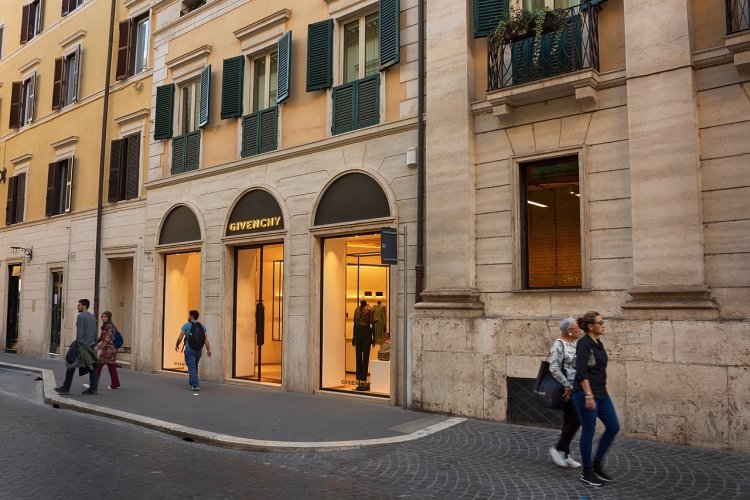Color Psychology in Logo Design: A Guide for Logo Designer App Users
For those embarking on logo design or seeking to revamp an existing brand image, understanding the psychological impact of colors is essential. Take advantage of the vast color options in logo creator apps, and let your brand's personality shine through in its visual identity.
Share this Post to earn Money ( Upto ₹100 per 1000 Views )

In today's digital age, where attention spans are short and first impressions matter, the significance of logo design cannot be overstated. One crucial aspect of creating a memorable and impactful logo is understanding color psychology. In this guide, we will explore how colors influence consumer perceptions and behaviors, specifically focusing on logo design through the lens of a logo creator app.
Introduction
Definition of Color Psychology
Color psychology delves into the emotional and psychological impact of colors on human behavior. It plays a pivotal role in various aspects of design, with logo design being a key area where color choices can make or break a brand.
Importance of Logo Design
Logos are the visual representation of a brand and serve as a powerful communication tool. The right combination of colors can evoke specific emotions, creating a lasting impression on consumers.
Connection between Color and Consumer Perception
Understanding the psychological associations tied to different colors enables logo designers to strategically craft logos that resonate with their target audience.
Basics of Color Psychology
Warm vs. Cool Colors
Warm colors like red and yellow evoke energy and passion, while cool colors such as blue and green convey calmness and trust. Logo designers must consider the emotional impact of each color.
Primary Colors and Their Meanings
Primary colors—red, blue, and yellow—have distinct meanings. Red symbolizes passion and energy, blue conveys trust and professionalism, and yellow exudes positivity and happiness.
Secondary Colors and Their Impact
Combining primary colors to create secondary colors introduces a new layer of meaning. Green represents growth and health, while purple is associated with luxury and sophistication.
The Significance of Each Color in Logo Design
Red: Passion and Energy
Logos utilizing red capture attention and convey a sense of passion and energy. Brands aiming to evoke strong emotions often incorporate red into their logos.
Blue: Trust and Professionalism
Blue is a popular choice for logos seeking to establish trust and professionalism. It is commonly used by corporate brands looking to convey reliability and stability.
Green: Growth and Health
The color green is linked to nature, growth, and health. Brands emphasizing these qualities often use green in their logos to connect with environmentally conscious consumers.
Yellow: Positivity and Happiness
Yellow is a vibrant and positive color associated with happiness. Logos featuring yellow elements are likely to attract attention and convey a cheerful brand image.
Purple: Luxury and Sophistication
Purple, often associated with royalty, signifies luxury and sophistication. Brands aiming for a high-end image may choose purple as a dominant color in their logos.
Orange: Creativity and Enthusiasm
Orange is a color that exudes creativity and enthusiasm. Logos incorporating orange elements are likely to appeal to consumers seeking innovative and dynamic brands.
How Colors Affect Consumer Behavior
Creating Emotional Connections
Colors evoke emotions, and by choosing the right colors, brands can create strong emotional connections with their audience. Understanding the psychological impact of each color ensures that the chosen palette aligns with the brand's identity and message.
Building Brand Recognition
Consistent use of colors in branding builds recognition. Logos become instantly associated with a brand when consumers consistently encounter specific colors across various platforms.
Encouraging Action Through Color
Strategically chosen colors can prompt specific actions. Whether it's making a purchase or engaging with content, colors play a role in influencing consumer behavior.
Utilizing Color Psychology in Logo Creator Apps
Overview of Logo Creator Apps
Logo creator apps have revolutionized the design process, allowing individuals and businesses to create professional-looking logos without the need for extensive design skills. These apps typically offer a range of color options for users to choose from.
Incorporating Color Options in Design
Logo creator apps often provide a wide spectrum of color choices. Designers can experiment with different color combinations to find the perfect palette that aligns with the brand's identity and message.
Tips for Effective Color Choices
When using a logo creator app, it's essential to consider the principles of color psychology. Pay attention to the emotions each color evokes and how they align with the brand's values. Experimenting with variations can lead to a logo that not only looks visually appealing but also resonates with the target audience.
Conclusion
In conclusion, color psychology plays a pivotal role in logo design, influencing consumer perceptions and behaviors. Logo creator apps provide a user-friendly platform for designers to experiment with colors and create logos that leave a lasting impression.
Encouraging Action and Further Exploration

For those embarking on logo design or seeking to revamp an existing brand image, understanding the psychological impact of colors is essential. Take advantage of the vast color options in logo creator apps, and let your brand's personality shine through in its visual identity.
















